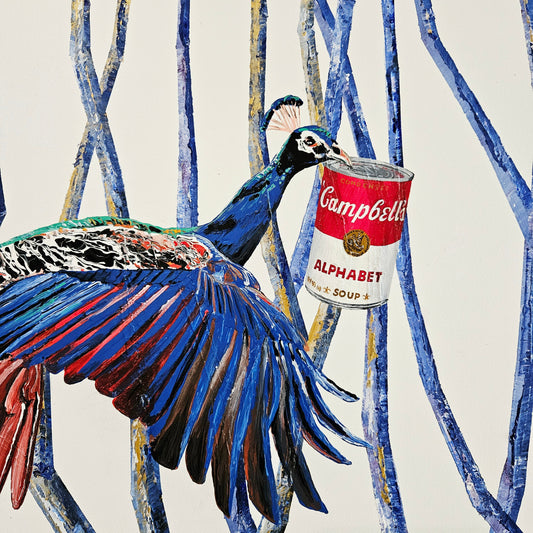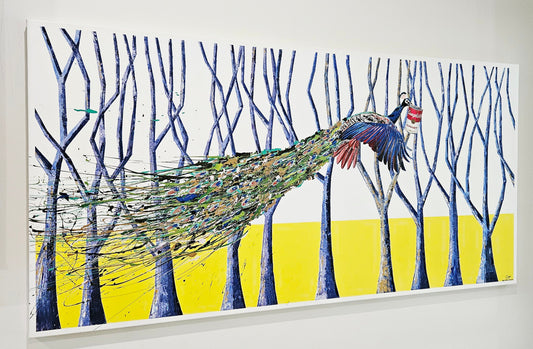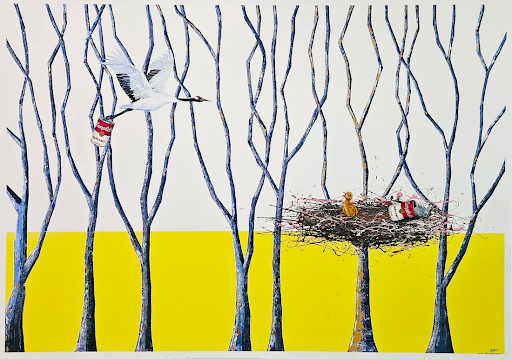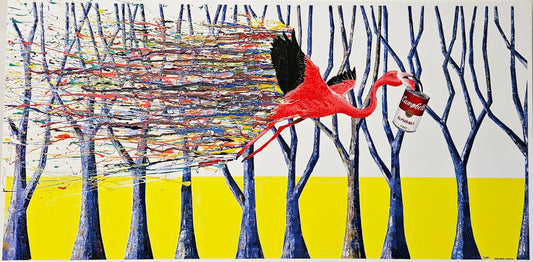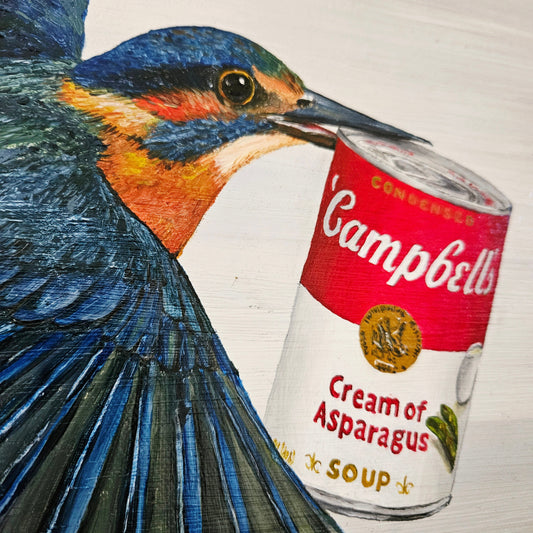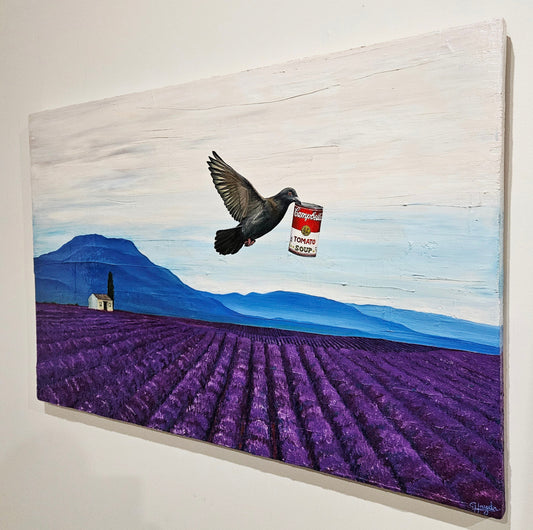"Weeping Willows: Rendering the Intensity of Englander-Porter's Masterpiece and the Universal Symbol of the Weeping Willow Tree"
"Weeping Willows by Haydn Englander-Porter: Revealing the Art and Symbolism"

Art possesses the unique gift of transcendence, reaching out across the annals of time and space to touch universal themes that sing to one's soul. Great would be the example in this regard, akin to a painting by the hand of Haydn Englander-Porter, "Weeping Willows," up for sale on Bluethumb. The artwork is visually marvellous and emotional, opening itself to viewers to go deep into the meaning. In this blog, we will have a closer look at the inspiration and idea behind the piece "Weeping Willows" before moving on to the meanings of the crying willow trees across cultures.
The Artist: Haydn Englander-Porter
Before delving deeper into the art of "Weeping Willows," one must first grasp the person behind the canvas. Haydn Englander-Porter is an artist best described as evocative and thoughtful in his pieces. His works delve into nature, emotion, and human experience.
Most of his works show an attention to detail and an ability to encapsulate his subject. Much of Englander-Porter's oeuvre is inspired by the real-life experience of being deeply connected with nature. His creations are barely visual statements but multivalent ones that echo in the mind, inviting one to reflect and engage more deeply. "Weeping Willows" falls into no exception.
"Weeping Willows": In-Depth
"Weeping Willows" is a transfixing painting that captures weeping willows' vulnerable beauty and melancholy grace. The whole sky is filled with a shimmering, angelic light. The willow sprigs are cascading down, creating a peaceful and contemplative atmosphere. The palette of the work is yellows and blues. The blue and yellow jogging background contributes to the peacefulness of the work.
Composition and Technique
In "Weeping Willows, " Haydn Englander-Porter does well in his use of light and shade. The interaction between the dappled sunlight filtered by the trees and the deep shadows cast by the hanging branches makes this painting visually dynamic and engaging.
The foliage and bark were detailed well, indicating the artist's level of expertise and commitment to his paintings.
Emotional Resonance
"Weeping Willows" is a very emotional painting. The willow tree has always been associated with sadness and sorrow, and this painting effectively recaptures that sentiment. Yet, simultaneously, there is an inherent feeling of serenity and acceptance—an implication that coexistence with one's grief and the movement of time is an eventuality that will end in peace.
And so, the painting engages a viewer in thoughts about his own experiences of loss and healing, bringing one into a very personal relationship with the work. This emotional resonance makes "Weeping Willows" so compelling and memorable.
Weeping Willows: The Symbolism of It
Weeping willows have been a powerful symbol in various cultures and contexts through the ages. Their unique appearance and the emotions they evoke have made them a popular motif in art, literature, and mythology.
Let's explore the different meanings and interpretations of weeping willows worldwide. In Western culture, the weeping willow is associated with sadness and grief. This is so because of the hanging branches of the tree that often resemble drooping tears to the ground. Usually, weeping willows are found in cemeteries and memorial gardens, which indicates better the people who have passed away.
In Eastern Culture
In Eastern cultures, the weeping willow has different connotations. In Chinese culture, the tree relates to femininity, grace, and resilience. It is part of much traditional artwork and poetry in China, symbolising both beauty and endurance. Willows' capability to bend rather than break under brisk winds reflects strength and flexibility, supposedly in the face of adversity.
In Literature and Mythology
Weeping willows have also been featured in various myths and works of literature. According to Greek mythology, the willow tree was marked by the goddess Persephone, who was kidnapped by Hades and taken to the underworld. Many believe that the tree is sad because Persephone is sad.
In literature, weeping willows often set a mood of sadness and reflection. For instance, in many of his plays, Shakespeare alludes to a willow tree, evoking a melancholy and lamenting feel.
The Universal Appeal of Weeping Willows
Despite the differences in cultural symbolism, the weeping willow appeals to all because it can stimulate a sensation of contemplation with great depths of emotions. It has drooping, graceful branches forming a natural canopy over one's head—an open invitation to quiet contemplation, similar to being a solid symbol of reflection and inner peace.
The ease with which the weeping willow touches people lies in its attachment to natural healing. The natural settings provided by the willow tree reduce stress and induce a good feeling while enhancing wellness. Its tranquil beauty creates a space for people to get in touch with their deepest emotions and find solace.
The weeping willow inspires Artistic Inspiration.
Artists such as Haydn Englander-Porter are aware of its aesthetic and symbolic characteristics. The tree's ethereal beauty and emotional depth have long made it an alluring subject for artistic exploration. In "Weeping Willows," Englander-Porter captures not only the visual allure that the tree holds but also its deeper, profound meanings. Interacting with artwork, such as "Weeping Willows," becomes a very intimate and life-changing experience.
Each viewer brings into the interpretation of the painting their experiences, emotions, and perspectives on life. Readers are invited to reflect on their connections to the weeping willow and the feelings that it evokes.
Memories and Associations
Think about your memories and associations with weeping willows. Maybe you have great memories from when you were a kid, playing under some willow tree; perhaps you are reminded of someplace or someone. Personal associations such as these bring layers of meaning to your interpretation of the painting.
Affective Responses
Pause briefly and consider how the song title "Weeping Willows" makes you feel. Are you relaxed and at ease? Or do you perceive a sense of loneliness and reflection in the painting? Art can evoke multiple feelings from an individual, and your emotional response could further enhance your appreciation for the piece.
Find Deeper Meaning
Ultimately, the meaning of "Weeping Willows" in the end cannot be defined— it is up to the viewer's interpretation. When one relates personally to the painting, the insights it brings out are subjected to meaning from the viewer.
Haydn Englander-Porter is a master of his work, "Weeping Willows," an imbroglio that enfolds the fragile beauty and depth of the weeping willow tree in its emotional arbour.
The composition and detailing of the painting are so detailed as to call viewers into its scene of sadness, healing, and the passage of time. The remarkable universality of appeal of its rich symbolism of the weeping willow is in its linkage with nature and human experience.
In different cultures and contexts, this tree has been seen as a symbol of mourning, resilience, and introspection, all of which continue to attract and inspire. Once we consider "Weeping Willows," we are reminded again of how much art and nature may give comfort, inspiration, and a deeper understanding of ourselves and the world around us.

